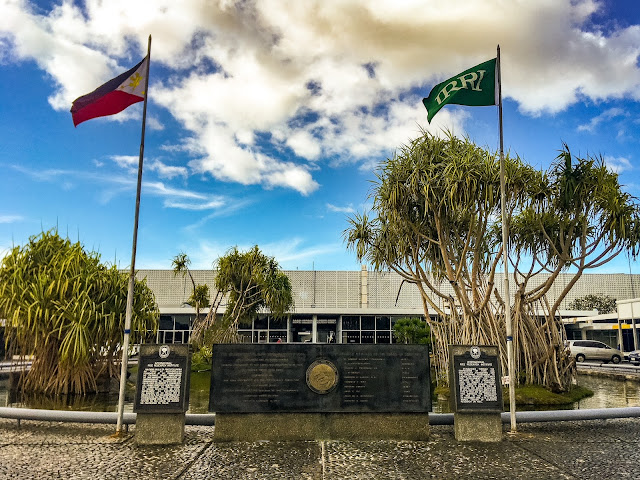Los Baños: a Cosmopolitan University Town in Laguna
 |
| Carabao Park: A Landmark inside the University of the Philippines Los Baños campus (Photo: Berniemack Arellano) |
Digging again in the Census of Population and Housing (CPH) of 1970 and 1980, among all the towns in the Province of Laguna, Los Baños registered most number and diverse non-Filipino or foreign language speakers than any town or city at that time.
In the 1970 CPH, English and Other Foreign Languages figured out in LB’s Mother Tongue population table. (Philippines National Census and Statistics Office, 1970, p. 347) In other towns, it’s Chinese (not sure whether it’s Hokkien, Cantonese, or Mandarin) that dominate foreign languages.
 |
| Southeast Asian Regional Center for Graduate Study and Research in Agriculture (SEARCA) Building inside UPLB Campus (Photo by Berniemack Arellano) |
The 1980 CPH was more detailed, however estimated based on 20% sample. There were 20 Hindi-speaking households, followed by 15 Bahasa Indonesia households. English also figured out as well. In 1980, both Bicol and Iloco (20 households each) were the most numerous non-Tagalog speakers in the town, followed by Cebuano (15), Waray (15), Davaoeño (10), Hiligaynon (5), Bagobo (5), Zambal-Bolinao (5), Kapampangan (5), Pangasinense (5), and Kapul (5). Tagalogs still dominate the town’s language-scape. (Philippines National Census and Statistics Office, 1980, p. 161)
The presence of institutions such as the University of the Philippines Los Baños, Southeast Asian Regional Center for Graduate Study and Research in Agriculture (SEARCA), and the International Rice Research Institute (IRRI) contributed to this diversity of languages of the town. There were and still are numerous foreign students and researchers that reside in the town. Also, being one of the largest universities of the UP System, it too attracts students from diverse cultures of the Philippines.
 |
| International Rice Research Institute (Photo: Berniemack Arellano) |
Back in the pre-Covid Pandemic days, one can feel the cosmopolitan and culturally-diverse “diwa ng lunan” or sense of place not only within UPLB Campus or IRRI, but also at the neighboring communities and places such as the Grove, Batong Malaki, and even in neighboring town Bay. It is noted that there are restaurants and shops that serve foreign food such as Phuong's for Vietnamese cuisine and Nasi House for Malaysian cuisine. IRRI's cafeteria serve Indian and vegetarian meals on lunch. I have not fully explored the international culinary scene of the town since the Pandemic hit.
I hope that when the Pandemic’s woes subside, that vibrant and diverse LB cosmopolitan vibe will eventually return.
References
Philippines National Census and Statistics Office. (1970). Laguna: 1970 Census of Population and Housing. Manila: National Census and Statistics Office.
Philippines National Census and Statistics Office. (1980). Laguna: 1980 Census of Population and Housing. Manila: National Census and Statistics Office.
